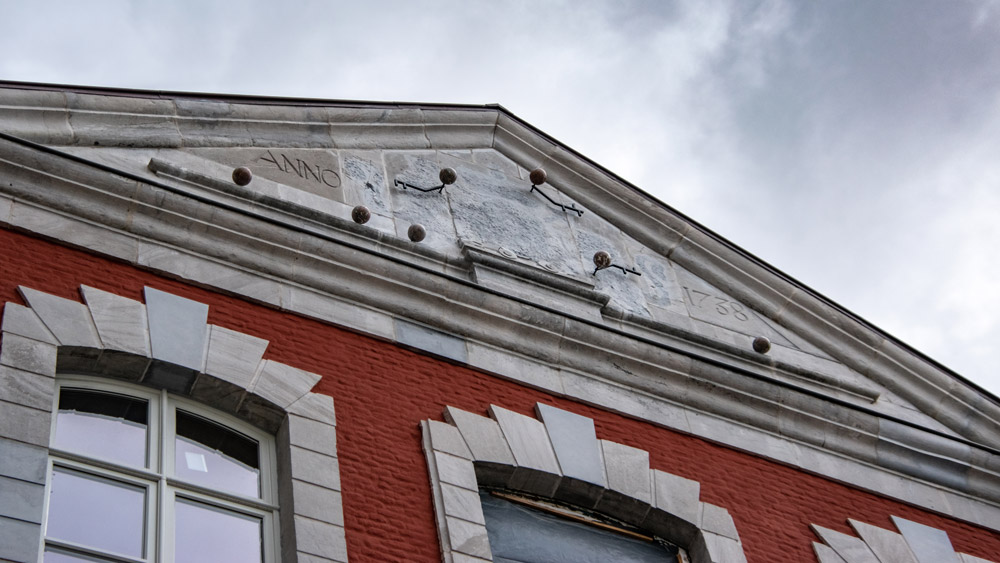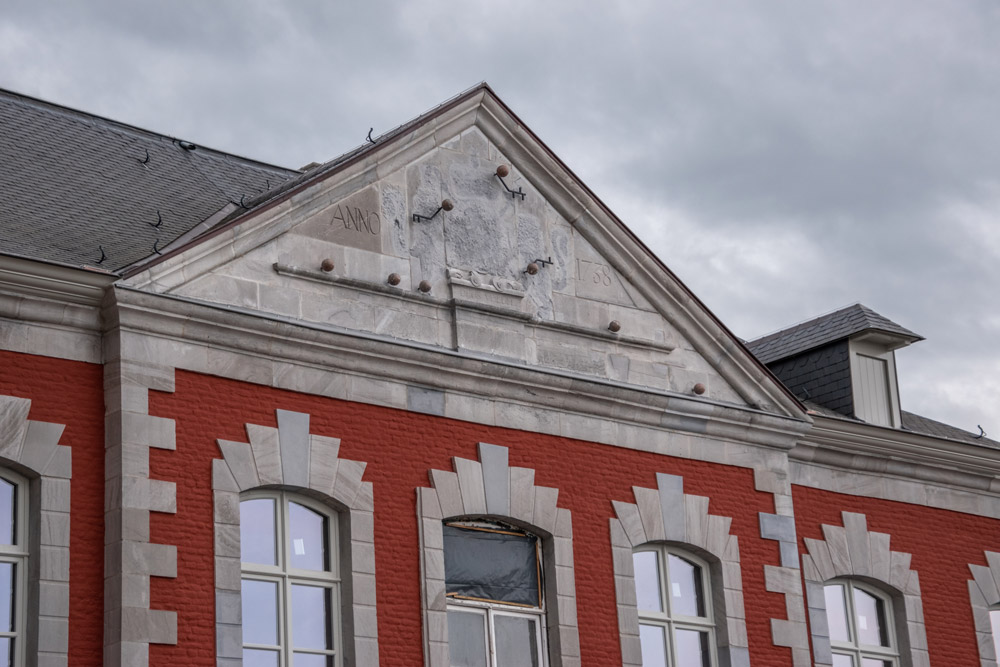Traces of Histories
Public commissionsArtistic intervention at the level of the pediment of city hall Tongeren.
8 marble spheres, metale structure and key stone (on square)
site-specific
photo: J. Huygen (Tongeren)
Following the recent restoration and beautification works at City Hall, a subtle but enriching artistic intervention was made by Wesley Meuris. The work is entitled TRACES or HISTORIES.
If you look at the (front) facade of the town hall, you may notice the 8 marble spheres that were installed at the level of the pediment. This artistic intervention at the top of the pediment is accompanied by a legend that can be found at the bottom (on the Town Hall square). This legend – a natural stone floor plate – tries to give meaning to a rather remarkable gap in the Town Hall façade. In 1738, the coat of arms of Prince Bishop Joris-Lodewyck Van Berghe was placed there. Not too much later, that same ornament was largely destroyed by Liège patriots. Today, only a few fragments of the original coat of arms remain. These remnants – like the town hall, by the way – are protected as monuments. Large parts of the coat of arms are therefore missing!
The question then arises, how can we understand that which – though no longer visible – is still historical? What anchor points can help us understand and narrate the past?
Actually, finding out exactly what happened to the coat of arms over the years is almost impossible. In any case, little can be found in the city archives. In this sense, it is also very difficult to precisely name the traces left behind by history. Although there are many gaps in the historiography, historians can refer to certain moments and possible interventions from that time. The legend incorporates these data and tries to give an interpretation of the past. An interpretation that also respects the gaps.
The legend includes both the origins (1738) and the current situation (now). As well as its destruction by the Liège Patriots (1789), as well as its probable destruction by the French (1798). Not only the destruction gets its presence, also the further chopping away of the remaining original coat of arms with the intention of obtaining a total restoration (1970-80). In its conception, the legend plays on an interpretive character, but at the same time it also highlights a gap of historical knowledge. The anchor points imparted by this legend suggest and project various potential events, but also leave room for critical questioning of time and place. The void that occurs on the pediment is actually an accumulation of historical events. In this sense, all the markers – the marble spheres – are also connected to multiple situations, actions and time points. The precised spheres initiate an initial narrative. The other spheres, resting on the cornices, suggest potential other historical narratives. Facts and stories we do not yet know become part of how we can interact with the past. Indeed, the historical narrative is not infrequently determined (and can therefore vary) based on specific moments in time or actions.
TRACES or HISTORIES appeals to the imagined ‘history’, be it by referring to its physical absence, narrative void or uprooted historical narrative. The design does not seek to be a replacement or contemporary replica of the original, nor does it intend to constitute an abstraction or conceptualisation of what the coat of arms stands for. Rather, this work encourages reflection on heritage and its presence or absence in public space.


